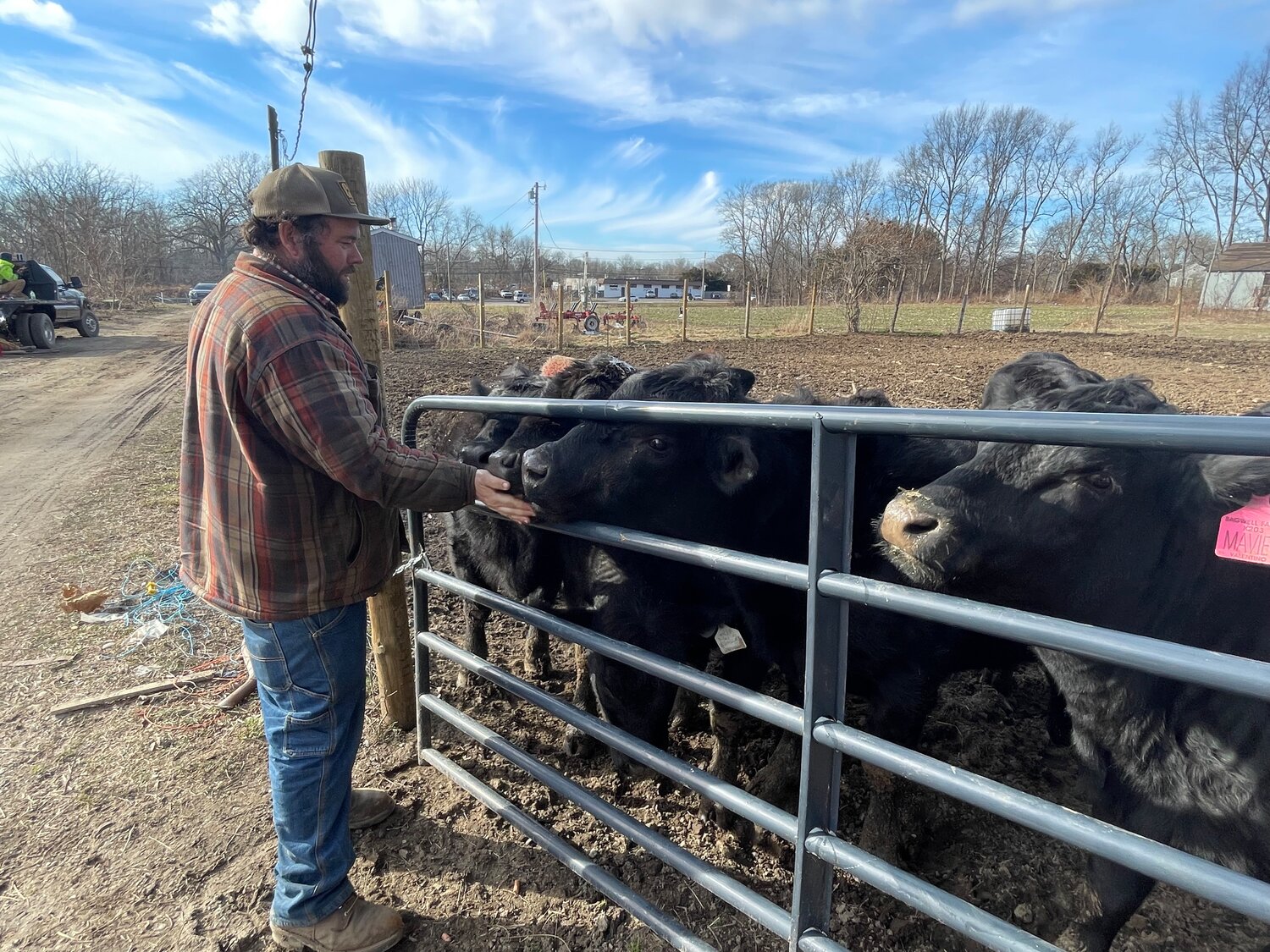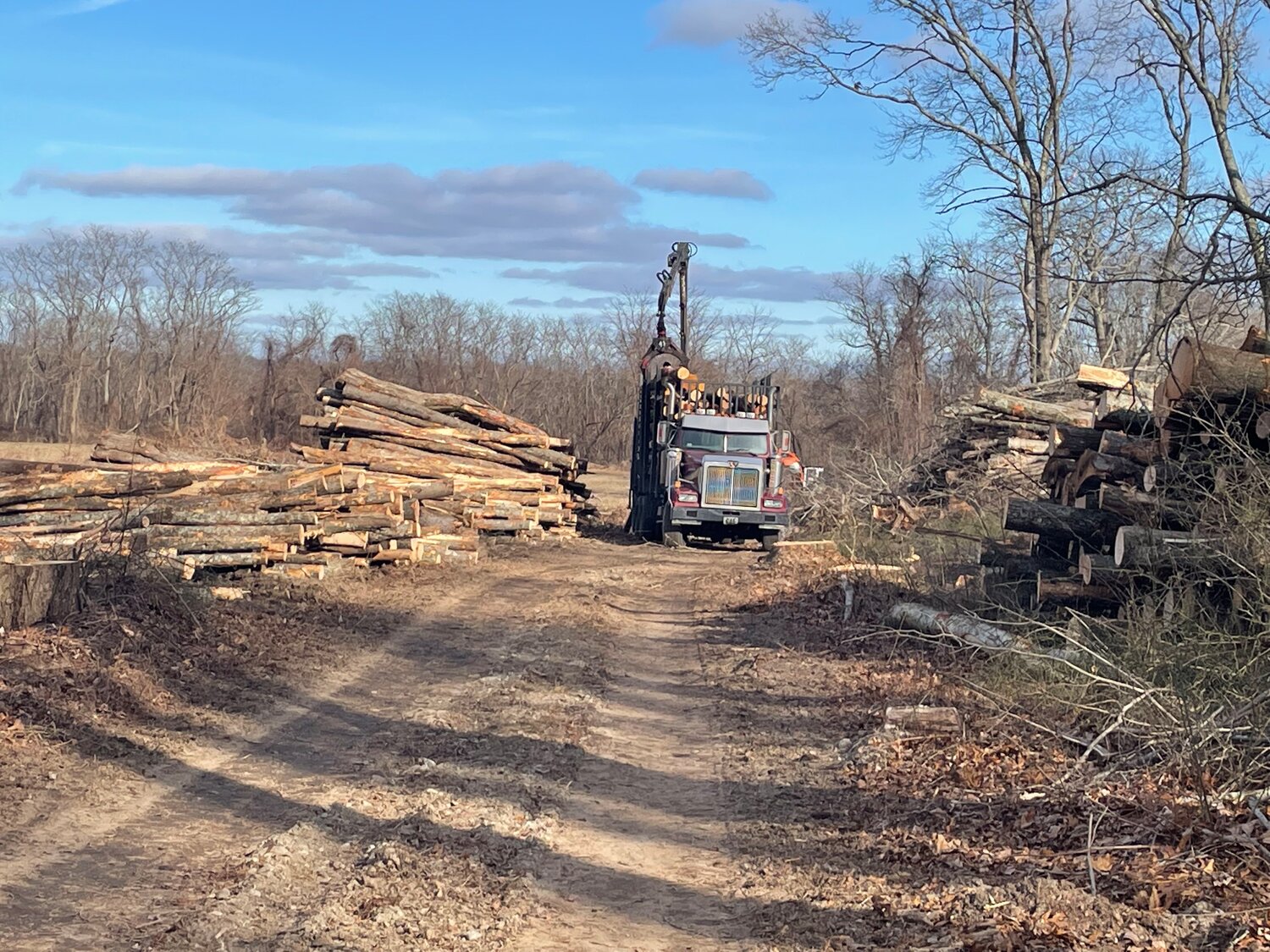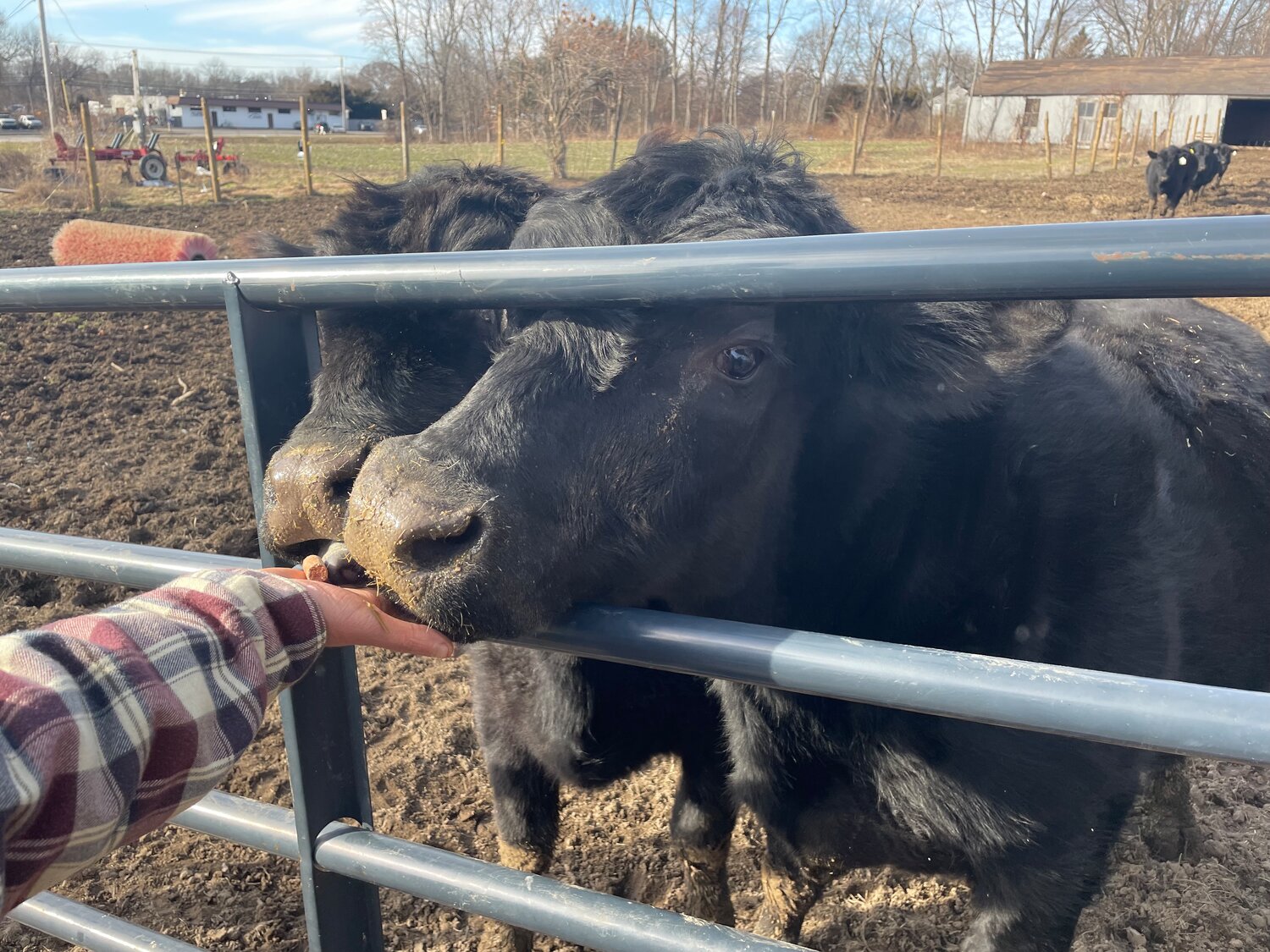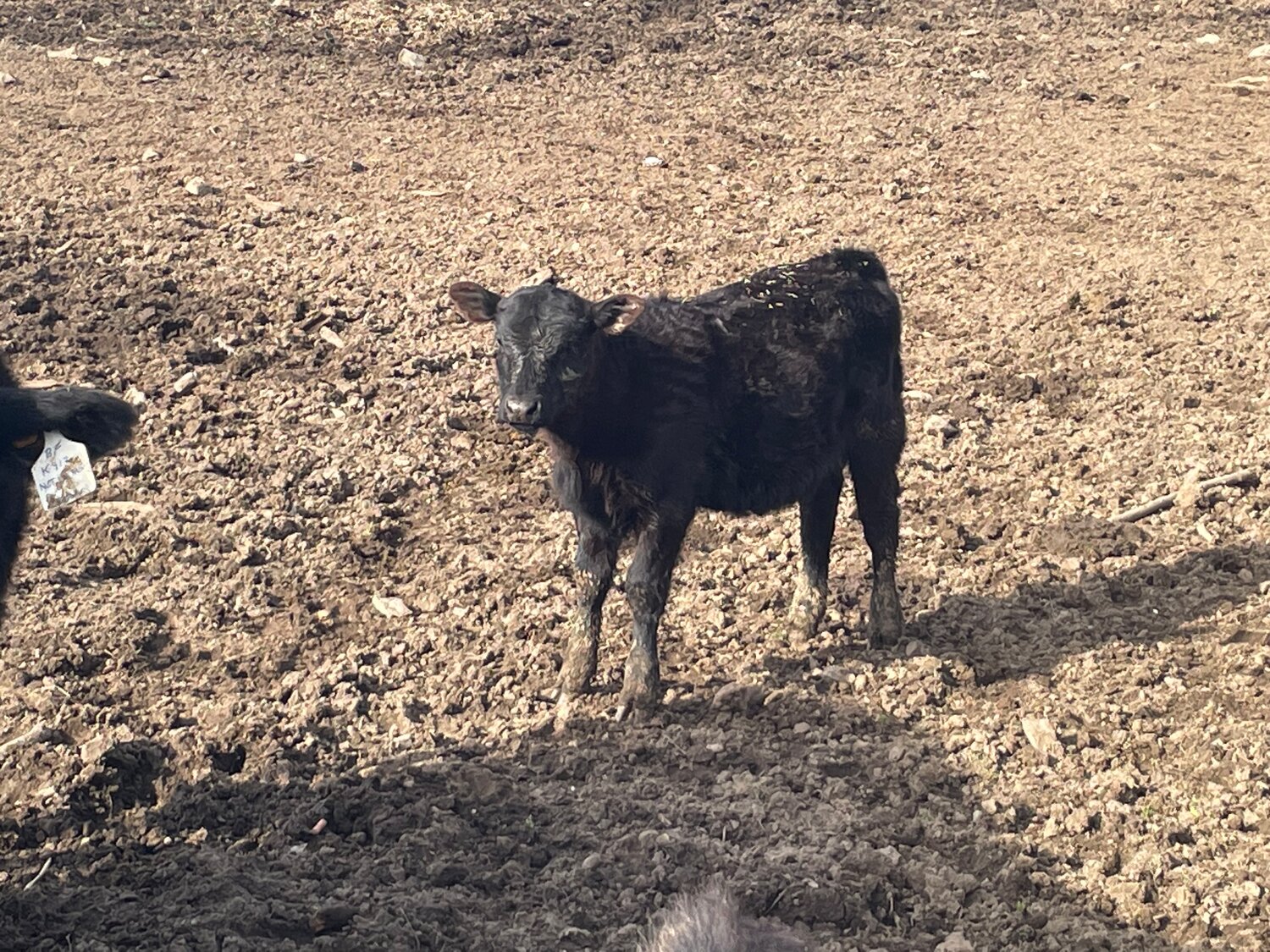Usher's Farm in Bristol is evolving, and growing, with the times
There aren’t a lot of working farms left, but Bristol’s largest is doing something unexpected; it’s expanding.
This item is available in full to subscribers.
Please log in to continue |
Register to post eventsIf you'd like to post an event to our calendar, you can create a free account by clicking here. Note that free accounts do not have access to our subscriber-only content. |
Day pass subscribers
Are you a day pass subscriber who needs to log in? Click here to continue.
Usher's Farm in Bristol is evolving, and growing, with the times
On a recent Tuesday afternoon, Usher’s Farm was humming with activity. Deliveries were incoming, a logging truck was outgoing. A couple of young men were welding something on a flatbed. Pigs were snorting, goats were bleating. Cows were looking for treats, and Patrick Usher was the man at the center of it all.
“Everything around here happens at the same time,” he laughed. And it’s only February.
There aren’t a lot of working farms left, but Bristol’s largest is doing something unexpected; it’s expanding.
“That’s Big Mama,” he said of one of the larger cows who was jostling for Usher’s attention at the fence. “She just had Blackberry, the first calf born on the farm in 50 years.”
Usher named the rest of the herd, obtained in April from a veteran-owned ranch in Exeter: Dalton, Beasley, Mavies, Valentin, Piper; many of the animals came with names in honor of high-ranking women in the military. They are Black Angus, prized for the quality of their meat, and the foundation of what Usher hopes will be a successful beef operation.
That is, if he doesn’t get too attached.
A bull named Vindicator blends in with the ladies, as Black Angus are hornless. “He’ll do two breedings and then I will send him to another farm. You don’t want to intermingle too much.”
“The cows are like my pets,” he said. “This is my breeding stock. I can’t really do anything with Blackberry because my father really loves him and my daughter named him, so that makes it even worse.”
“I might grab some more steers this spring. I tell the kids, you just can’t get too attached to anything.”
The kids are getting some practice at that. Usher’s daughter’s two goats are exclusively pets. But his son has been trying his hand at a small pork-raising operation, also begun last spring. He enjoyed a successful season, having sold five this year. They are a Mangalitsa Berkshire crossbreed. Genetically close to wild boar, they are furry, and, Usher says, are exceptionally good eating. They also have two piglets but they cannot go into the pen with the big ones until they can hold their own, so Usher and his son are building them their own little enclosure.
Eventually, Usher hopes to expand his Angus herd to 20 animals on site, and an additional 60 at an offsite location. “My goal is to sell two or three a month,” he said. “They will be raised on a little grain, but mostly hay and silage corn.”
A long history in Bristol
Usher’s family has worked the 110 acres at 616 Metacom Ave. for as long as anyone is likely to recall. Usher’s grandfather bought the farm in 1941, the same year Usher’s father was born. Grandfather Usher was himself born on a different farm in Bristol, Old Orchard Farm, across from the Rockwell School.
“We’ve been farming in Bristol for longer than we care to count,” said Usher. “Farming is not just something you do. It’s in your blood.”
If you are a fan of sweet corn in the summer, you know Usher’s farm stand, just north of Stop & Shop. But that is just the tip of the iceberg. The Farm extends a full mile toward the Kickemuit River with fields, some cleared and some wooded, on either side. “Where else can you go in Bristol and be in the middle of nowhere?” asked Usher, driving his pickup slowly down the access road that leads to the fields where the first corn of summer gets its start.
Usher’s grandfather paid a lot for this farm — $15,000 in 1941 — and the back fields were a big part of the reason why. They slope gently, making for great drainage, and they catching the rising sun from the East and hold it for much of the day.
Usher’s sweet corn planting begins in these back fields and he succession plants through about 40 acres cultivated with sweet corn, initially planting about every 10 days, increasing to seven, and then every three in the height of summer.
“On a hot July day you can actually listen to the corn grow,” said Usher. “You know when you take damp grass and pull it between your fingers? That’s what it sounds like.”
Though corn has a growing season of about 70-85 days, the shorter days of September and October are less productive. “You make the most in the beginning of the sweet corn season,” said Usher. “As soon as Labor Day hits it drops off. Nobody is buying sweet corn in October.”
In response to that reality, Usher is making a few changes in an effort to meet that demand — especially after last year saw his profits take a huge hit when deer destroyed 14 acres of his crop. One day last month, he saw 23 deer in one field alone. If you went to pick up corn last summer and found Usher’s closed earlier than expected, that’s why.
He’s clearing some land, about 6 more acres, on the eastern end of his property, to add to the acreage allocated for sweet corn production. And he’s been employing a method of planting with plastic that will allow him to get his crop in the ground — and corn out — weeks earlier than he has in the past.
Laying plastic is one of the few times during the season when Usher needs to hire extra hands; it’s a labor-intensive process, but it can be a game-changer when your bread and butter is a crop with a short, defined season.
Greatly simplified, the process involves laying sheets of plastic on a field in early spring, after creating ridges that will eventually become the corn rows. After a few days, when the earth under the plastic is warm to the touch, peel back the cover and plant the corn seeds halfway down the south face of each ridge. Then reposition the plastic and wait. The ridges support the plastic until the seedlings grow, promote good drainage, and serve as heat reservoirs. This technique ensures that the area under the plastic will not freeze, and is significantly warmer than the outside air.
As the seedlings grow, the area under the plastic must be carefully monitored for moisture and damage. Eventually, the little corn plants are acclimated by opening the plastic when conditions permit, until the plants can be fully exposed.
Plastic planting enables Usher to plant the first week of April, instead of the last. “Those extra days are huge,” he said. His goal? Corn on the 4th of July.
“These extra 6 acres will keep me open earlier and longer,” Usher said. “But I am spread thin, and I’m not a spring chicken.” To increase productivity, he recently purchased a corn picker, which he thinks will make a big difference.
Operation ‘New Lot’
“I call this the new lot,” Usher said of the area currently being cleared. “My father always thought this would be a very good field.”
The woodcutter began the job at the end of November, but the weather in December and January was not conducive to land clearing. “When the weather is good he is working seven days a week clearing the lot,” said Usher. “Like all farming, you make hay when the sun is out.” On this day, the hauler is leaving with only the second load of wood to go be processed. It’s not an easy paycheck.
“There is one tree he can’t touch,” said Usher. “I have a Red Tailed Hawk’s nest and they come back every year; he knows not to touch that tree.”
Usher puts down seed for the hawks, and in return they attack the English sparrows, red-winged blackbirds and others that go after the corn, chasing the flocks off his farm. “The hawks don’t discriminate,” said Usher. “One minute you’re picking corn and suddenly there’s feathers everywhere from them hitting a bird in midair. It’s incredible to watch. We have about six and I’m trying to keep them here.”
Clearing the land is only the beginning of a multi-year process. First the fields have to get stumped. Then in April or May Usher will put down a pasture mix for the cows, and they will spend two years in that field, grazing and loosening the earth with their hooves. Another benefit to having the cows down in the New Lot is Big Mama chases deer for fun.
“She keeps them scared and out. I’m hoping she’ll teach her daughter, Not The Mama, to chase them too.”
In the third year, he will put lime in the field in the fall, to make the soil less acidic. Usher estimates he will have to put down about three tons of lime on each acre.
“We will see how the lot comes together, the wetness, the drainage,” said Usher. “I’ll figure it out as I’m going, like with everything.”
“It’s a lot of work before I can even think of putting corn in and then in a matter of months it’s all here…once June‘s here there’s no time to do anything but grow sweet corn.”
In the off-season, Usher does a lot of reading on soil management and how to keep the microbes in the soil. He always plants winter rye, but recently read that too much decaying rye, tilled into the ground, can be detrimental. So instead he will use it as free feed for his animals. “You feed the cows, and you get rid of the excess rye,” he said. “You’ve got to keep reading.”
Farming is a growth industry here at Usher’s both on the main property and offsite partnerships where he grows most of his silage and his future beef herd. Of his success, he attributes much of that to his relationships with businesses like Sunset Cafe, Portside, and SS Dion, who buy from the Farm — not only sweet corn, but the cucumbers, tomatoes, peppers, green, and yellow squash, string beans, butternut squash and pumpkins he grows on an acre close to Metacom Avenue.
“Except the string beans,” Usher said. “The deer ate all the string beans this year.”
“The farming is easy. It’s dealing with everything else that is hard.”













